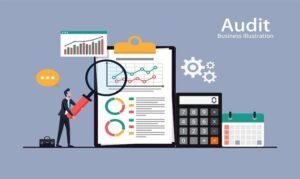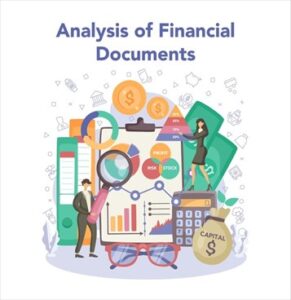The Importance of Risk Assessment in Financial Audits

The Significance of Risk Assessment in Financial Audits
It is a critical component of financial audits, providing auditors with a systematic approach to identify and evaluate risks that may impact the accuracy and reliability of financial statements. This article highlights the significance of risk assessment in financial audits, exploring its role, benefits, and techniques for conducting effective assessments. By embracing risk assessment, auditors can enhance the quality and effectiveness of their audits, ensuring the integrity of financial reporting.
Risk assessment in financial audits involves the identification and evaluation of risks that may lead to material misstatements in financial statements. It serves as the foundation for developing an audit strategy and determining the nature, timing, and extent of audit procedures. By assessing risks, auditors can prioritize their efforts and focus on areas of highest risk, ensuring a thorough and efficient audit process.
How to Conduct Risk Assessment in Financial Audits
Conducting a comprehensive risk identification requires a systematic approach, so you should know how to conduct risk assessment in financial audits. Key steps in the process include:
- Understand the Business and Industry: Gaining a deep understanding of the audited entity’s business operations, industry dynamics, and regulatory environment to identify inherent risks.
- Identify Risk Factors: Identifying potential risk factors that may affect the financial statements, such as changes in regulations, economic conditions, industry trends, or internal control weaknesses.
- Assess the Likelihood and Impact: Evaluating the likelihood of risks occurring and the potential impact they may have on the financial statements, considering both quantitative and qualitative factors.
- Prioritize Risks: Prioritizing risks based on their significance and potential effect on financial reporting, allowing auditors to allocate resources effectively.

- Benefits of Risk Assessment Risk assessment in financial audits offers several benefits in the context of financial audits, including:
- Enhanced Audit Effectiveness: By identifying and addressing potential risks, auditors can design appropriate audit procedures to obtain sufficient and appropriate audit evidence, improving the effectiveness of the audit.
- Focus on High-Risk Areas: Risk identification helps auditors concentrate their efforts on areas with the highest risk of material misstatement, ensuring a targeted and efficient audit approach.
- Early Fraud Detection: Risk identification enables auditors to identify and evaluate fraud risks, enhancing the likelihood of early detection and prevention of fraudulent activities.
- Improved Audit Planning and Resource Allocation: By understanding the risks associated with an audit engagement, auditors can plan the audit engagement effectively, allocate resources efficiently, and meet audit objectives within the allocated time and budget.
Techniques: Risk Assessment in Financial Audits
Various techniques can be employed to conduct risk identification in financial audits. These include:
- Analytical Procedures: Analyzing financial data and ratios to identify trends, anomalies, or significant fluctuations that may indicate potential risks or areas requiring further investigation.
- Internal Control Evaluation: Assessing the design and effectiveness of internal controls to identify control weaknesses or deficiencies that may contribute to higher audit risk.
- Inquiry and Observation: Conducting inquiries with management, staff, and other relevant parties, as well as observing key processes and controls, to gain insights into potential risks.
- External Research and Benchmarking: Utilizing external sources, such as industry reports, market trends, and regulatory updates, to identify industry-specific risks and benchmark against peer organizations.
Financial Audit Risk Assessment
Risk assessment in financial audits focuses specifically on risks that may impact the financial statements. It involves evaluating risks related to financial reporting, including risks of material misstatement due to errors, omissions, or fraud.
Financial Statement Risk Assessment
Financial statement risk identification encompasses the identification and evaluation of risks specific to each financial statement assertion, such as revenue recognition, inventory valuation, or completeness of disclosures. It ensures that auditors address risks associated with each financial statement element adequately.
Fraud Risk Assessment
Fraud risk assessment aims to identify and evaluate the risks of fraudulent activities that may impact the financial statements. It involves assessing the potential for fraud, understanding fraud indicators, and designing procedures to detect and respond to fraud risks effectively.
Internal Control Risk Assessment
Internal control risk evaluation focuses on evaluating the effectiveness of an organization’s internal controls in mitigating risks to financial reporting. It involves identifying control weaknesses or deficiencies that may increase the risk of material misstatement and designing audit procedures accordingly. ICRA is the process of identifying, assessing, and mitigating risks to the achievement of an organization’s objectives. ICRA is an essential part of any organization’s risk management framework, as it helps to ensure that the organization is taking steps to protect itself from potential losses.
Harnessing the Power of Risk Assessment in Financial Audits
Risk evaluation is a vital tool in the arsenal of auditors, enabling them to identify, evaluate, and address risks that may impact the accuracy and reliability of financial statements. By conducting thorough risk evaluation, auditors can enhance the effectiveness and efficiency of financial audits, focusing on high-risk areas and ensuring the integrity of financial reporting. Embracing risk evaluation techniques and integrating them into the audit process empowers auditors to deliver high-quality audits, providing stakeholders with the assurance they need to make informed decisions based on reliable financial information.
Ahmed Mahfoudh Chartered Accountants & Auditors is a leading accounting and auditing firm that specializes in risk assessment in financial audits. We have a team of experienced auditors who are experts in identifying and assessing the risks of material misstatement in financial statements. We can help you to:
- Identify the risks of material misstatement: We will work with you to understand your business and identify the risks that could impact the accuracy and reliability of your financial statements.
- Assess the risks of material misstatement: We will use our expertise to assess the likelihood and impact of each risk that we identify.
- Develop audit procedures: We will develop audit procedures to address the risks of material misstatement that we identify.
- Perform the audit: We will perform the audit in accordance with generally accepted auditing standards (GAAP).
- Form an opinion on the financial statements: We will form an opinion on whether the financial statements are presented fairly in accordance with GAAP.
We are committed to providing our clients with the highest quality risk assessment services. We understand that the risk assessment in financial audits is an important part of any financial audit, and we are committed to helping you to identify and mitigate the risks of material misstatement in your financial statements.
We offer a variety of risk assessment services, including financial statement risk assessment, fraud risk assessment, and internal control risk assessment.
We also offer a number of other services, such as:
If you are looking for help with risk assessment in financial audits, please contact Ahmed Mahfoudh Chartered Accountants & Auditors. Contact us today to learn more. We would be happy to discuss your needs and how we can help you to achieve your goals.
